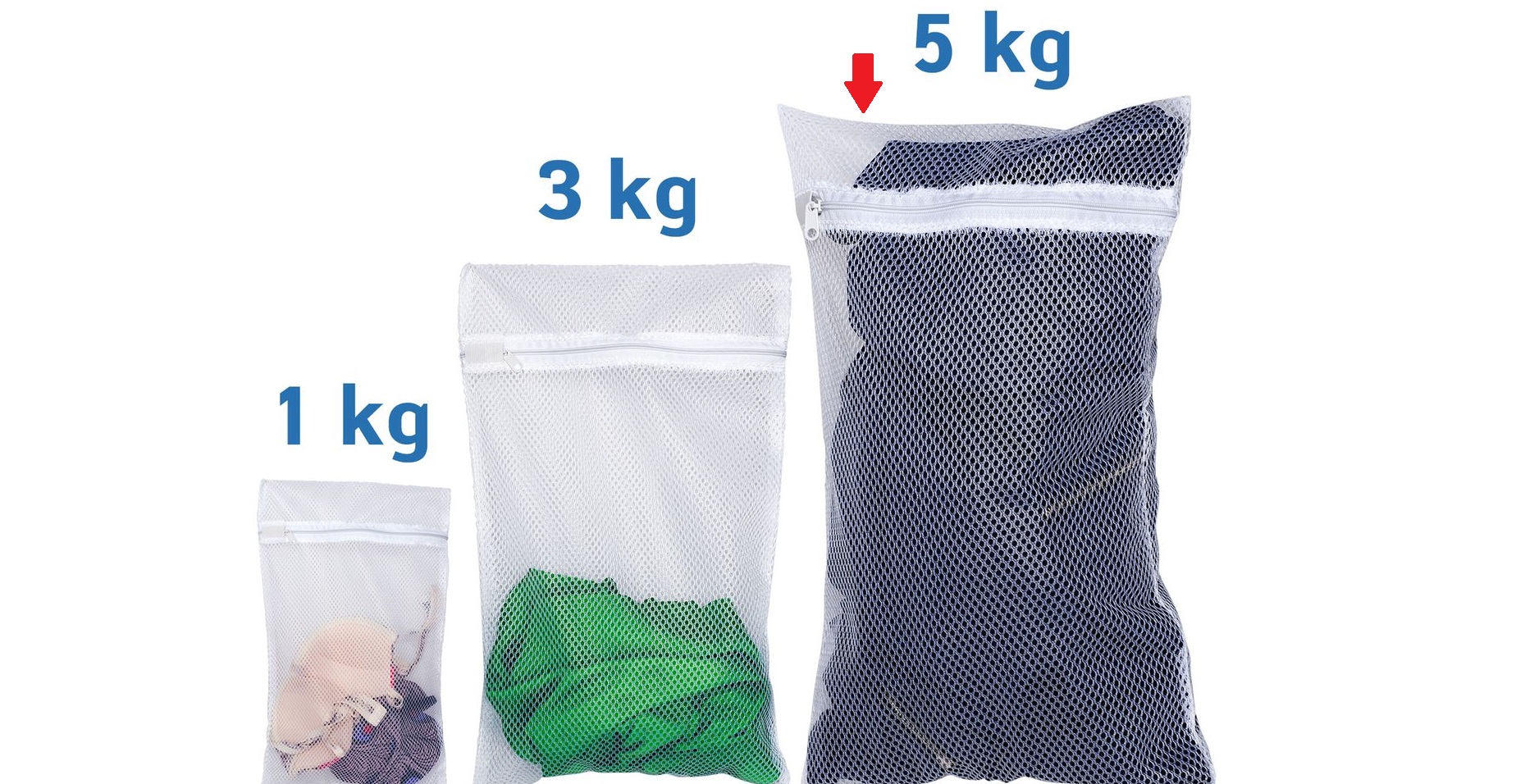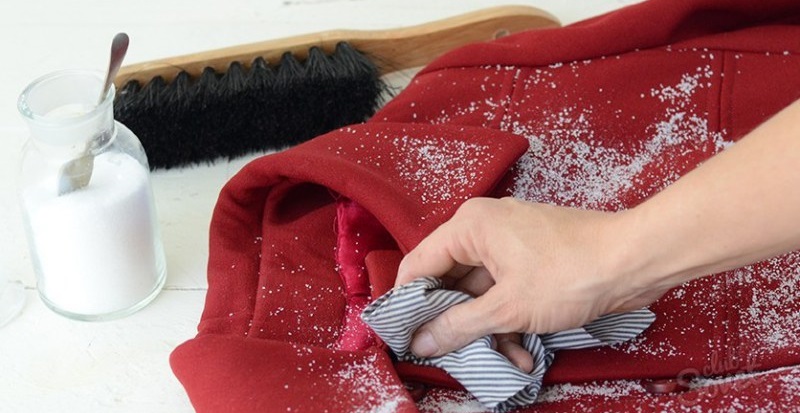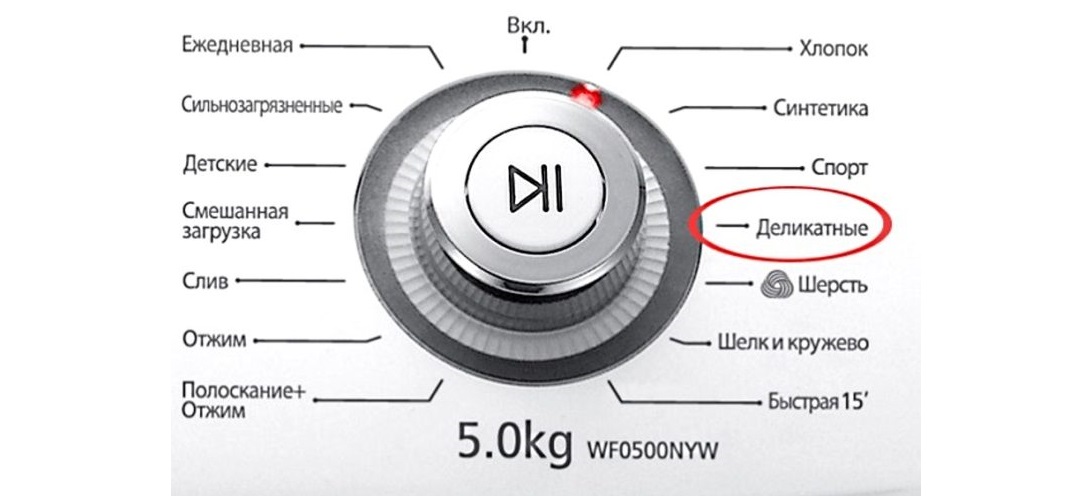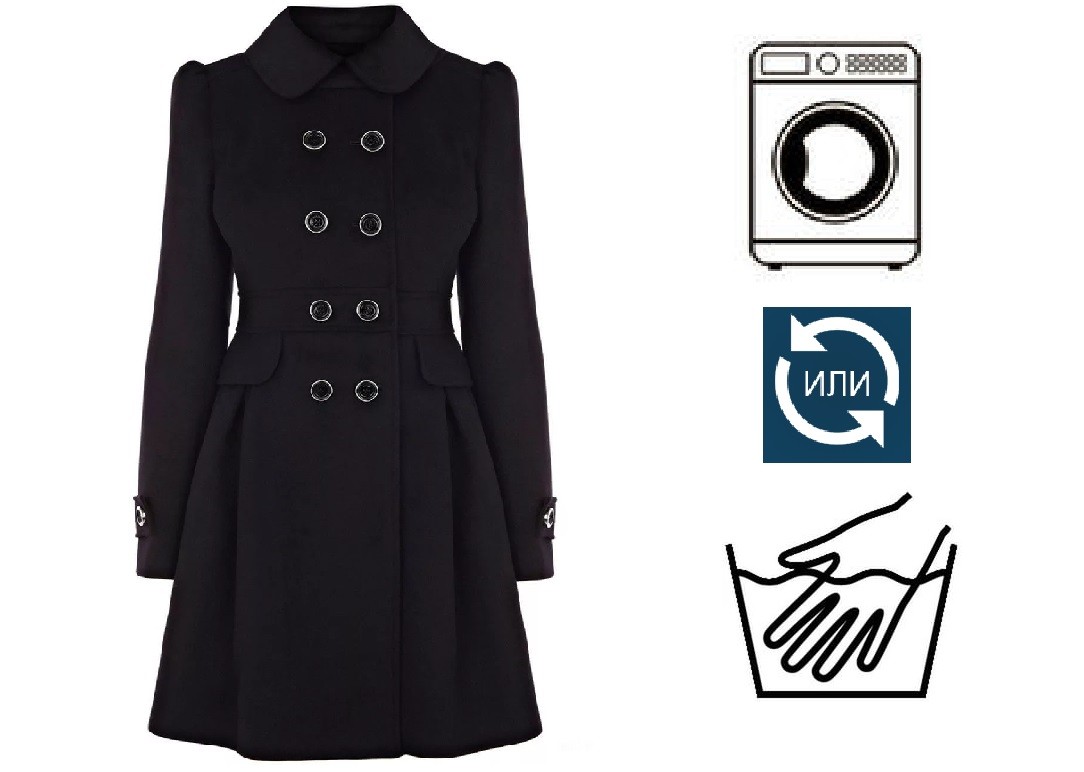How to wash a polyester coat in a washing machine?
 Polyester outerwear attracts with its warmth, elegance and inexpensive price, but when it comes to practicality, everything is not so rosy. Coats and cardigans quickly get dirty, especially in the area of cuffs, pockets, armpits and collar. Local washing is only a temporary measure, since sooner or later you will have to wash the entire thing. It is extremely difficult to deal with dirt manually; it is better to turn to a washing machine for help. But first, let’s figure out how to properly wash a polyester coat in a washing machine and what you need for this.
Polyester outerwear attracts with its warmth, elegance and inexpensive price, but when it comes to practicality, everything is not so rosy. Coats and cardigans quickly get dirty, especially in the area of cuffs, pockets, armpits and collar. Local washing is only a temporary measure, since sooner or later you will have to wash the entire thing. It is extremely difficult to deal with dirt manually; it is better to turn to a washing machine for help. But first, let’s figure out how to properly wash a polyester coat in a washing machine and what you need for this.
Don't rush to put things in the machine
The good news is that polyester coats can be machine washed. But only if certain rules are observed. You cannot immediately throw something into the drum that has never been in the washing machine - you need to carefully prepare.
First of all, we check whether the material is resistant to the selected detergent. Many people do not know that the piece of fabric included with the coat is not for a “patch”, but for a test wash in a machine.. It is necessary to apply the product to a cloth and evaluate the result of the interaction: if there is no deformation or extraneous coloring, then the powder is suitable. Ideally, we throw the scrap into the machine and test the fabric first.
The piece of fabric included with the item is necessary for a trial wash and detergent testing.
After making sure that machine washing and the selected detergent do not harm the coat, you can begin the immediate preparations:
- unhook all detachable elements (belt, edge, decor, cuffs, collar, metal inserts);
- check that the pockets are empty (take out all the money, hairpins, keys);
- fasten all buttons, snaps and zippers;
- turn the coat inside out;
- place the item in a special mesh bag (in extreme cases, use a regular pillowcase or duvet cover).

The next step is to carefully study the factory tag. On it, the icons contain encrypted instructions for washing a specific item: recommended temperature, permissible spin speed and resistance to drying and ironing. If the label contains an image of a crossed out basin, then you will have to forget about the machine. There's no such thing? This means there are no restrictions. As a rule, a polyester coat is washed at 40 degrees, but sometimes the manufacturer sets special requirements: 30 or 60 degrees.
Much depends on the composition of the fabric. If the coat is 100% polyester, then you don't have to worry too much. When adding other natural components, cashmere or wool, to the material, you will need to adjust your tactics, adhering to more delicate care.
What are we going to wash it with?
Special attention should be paid to the choice of detergent. What to buy, powder or gel, depends on the color of the coat. So, when cleaning dark things, black and blue, it is recommended to use gels. Liquid concentrates dissolve faster and do not leave white spots or streaks on the surface of the fabric.
When cleaning polyester coats, do not use bleach!
If you are washing a light or colored coat, then both liquid and dry formulations are suitable, but gel concentrates are more desirable. An absolute “no” applies only to bleaches, the use of which for washing polyester is strictly prohibited.Remember that most bleaching components are not compatible with polyester fibers: things will deteriorate, deform and fade.
Getting rid of stubborn dirt
But the coat is not always washed the first time, even in a washing machine. As a rule, complex stains such as wine, coffee, oil or grass will not be removed by ordinary powder. To remove dirt, you will have to carry out a more targeted and effective procedure.
It is best not to delay cleaning, but to start fighting stains immediately after they appear. Both fat and chocolate are easier to handle in a “fresh” state. Otherwise, the contamination is absorbed into the tissue structure, which complicates the removal process.
However, most stains can be removed easily and quickly. You just need to follow a few rules:
- Before washing, treat the stain with a special high-quality stain remover (it is better to find a product for polyester);
- when applying the product, work in the direction from the edges to the middle (so as not to smear the dirt more);
- leave the stain remover on the fabric for 5-40 minutes (the exact time is indicated on the product packaging).
Stains from polyester must be removed as soon as possible!
If the stain remover fails, then you should pay attention to folk remedies. You can get rid of dirt at home using available substances and components. We start from the nature of the pollution.
- Wine. Apply a mixture of salt and water to the stain and leave for 15-20 minutes.
- Fat. It is enough to treat the contaminated area with talcum powder and a brush, avoiding contact with water.
- Coffee, tea and chocolate. An almost universal remedy is glycerin mixed with ammonia in a ratio of 1 to 2.
Before applying stain remover to a stain, it is recommended to test the product on an inconspicuous area of the fabric. If there are no third-party reactions, we proceed to full cleaning.
Automatic cleaning procedure
It is recommended that you do one more test before placing your coat in the drum. More precisely, check the material and its pigment for strength. To do this, moisten a cotton pad or a piece of gauze and apply it to the item for a minute. If the scrap or cotton wool is stained, then it is better to abandon the machine - the paint is easily washed out and will not survive a full cycle.
After testing the coat, you can start loading it into the washing machine. We check that there are no foreign objects in the drum and place the product folded in a protective bag inside. Next we proceed like this:
- select the “Delicate” or “Synthetic” mode;
- using the label, we set the water heating temperature (usually no more than 30 degrees);
- turn off the spin or set the minimum number of revolutions (twisting will lead to deformation of the fabric);
- add detergent to the tray (you can use gel capsules or special napkins placed directly into the drum);
- If possible, install a double rinse (to completely rinse the detergent from the fibers).
When washing synthetic outerwear, it is recommended to add a special conditioner that will remove static electricity.
If the coat has down or padding polyester insulation, it is recommended to throw special silicone balls into the drum. The latter, when the drum rotates, will tap the item, preventing the stuffing from crumpling. Similar devices are sold in hardware stores.
As a rule, most modern washing machines offer automatically configured programs for cleaning polyester products - “Synthetics”, “Outerwear”, “Hand” or “Delicates”. If this is not possible, then you will have to set the temperature and spin level yourself.
At the end of the cycle, the coat is carefully removed from the net, shaken and placed on a hanger. You cannot wring out polyester; you can only lightly wipe away the moisture from the surface of the product. Drying the item in a horizontal position is also not recommended, as the clothes will quickly lose their original shape.
There is no need to iron synthetics, since thanks to minimal spin, the material practically does not wrinkle. If necessary, you can use a hand steamer. Ironing is also allowed, but only through moistened gauze.
A polyester coat can be washed using the “Synthetic”, “Outerwear”, “Hand” or “Delicate” mode.
If the coat is only slightly soiled in one place, then it is better to wash it manually and locally instead of machine washing. Everything is done simply: select a gentle stain remover, apply it to the stain and carefully wash it off. After the procedure, it is important to thoroughly rinse the treated area to remove not only remaining dirt, but also the cleaning agent itself.
Or maybe dry cleaning is better?
It is worth understanding that washing a polyester item is not an easy test. The wrong choice of temperature or excessive spinning can irrevocably damage an expensive coat. Therefore, in some cases it is better not to take risks, but to seek help from a dry cleaner. We are talking about the following situations:
- on the label there is an icon of a crossed out basin (which means the manufacturer excludes machine washing);
- white coat;
- stubborn, difficult to remove stains on the fabric - oil or fuel oil;
- It is impossible to remove the stain on your own;
- there are doubts in one's own abilities.
The presence of a crossed out basin icon on the label indicates that washing the product is prohibited - dry cleaning only!
The coat will last longer if you properly care for the product and remove stains in a timely manner. The main thing is not to rush and take into account the manufacturer’s recommendations.
Interesting:
Reader comments
- Share your opinion - leave a comment
Categories
Washing machine repair


For buyers

For users

Dishwasher

















Add a comment